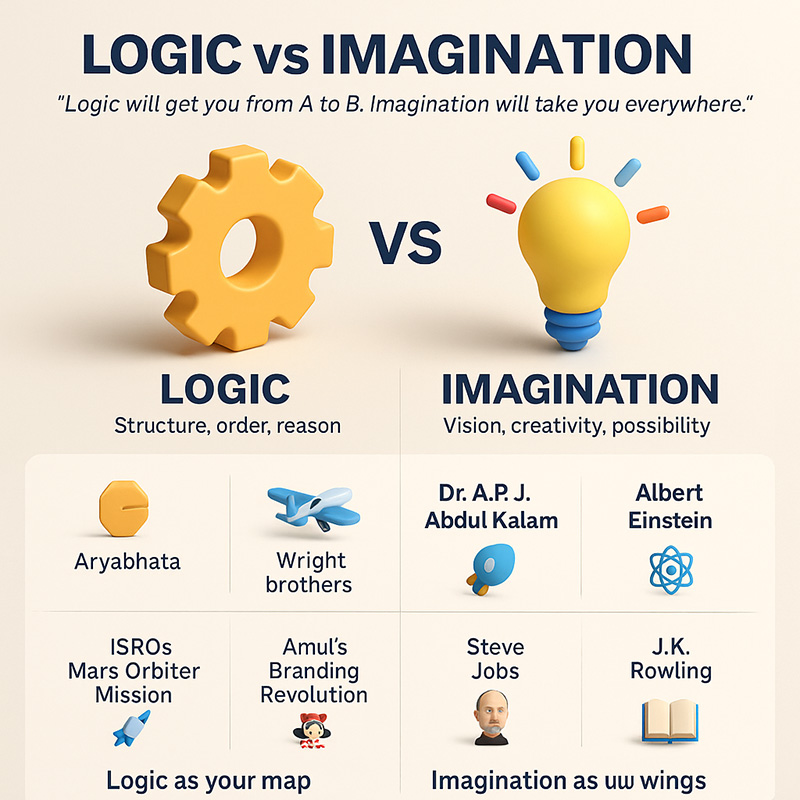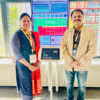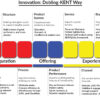
“Logic will get you from A to B. Imagination will take you everywhere.” — Albert Einstein
Initially, this Einstein quote would appear to be a romantic expression of creativity. But buried within its simplicity lies deep insight into human potential. Logic is the compass by which we find our way within the known world. Imaginative thinking is the sail by which we catch the winds of possibility, sailing past the horizon. Without logic, we will drift without purpose. Without imagination, we will never set sail.
Logic: The Key to Success
Logic is the domain of order, structure, and reason. Logic is needed to address well-defined problems. If you want to get from Point A to Point B, you need logic: the progression order, the shortest distance, the exact calculation.
Let us take the case of the Indian mathematician Aryabhata, who in the 5th century employed strict logic and mathematical thinking to arrive at the value of pi and the circumference of the Earth with great accuracy. His genius was in careful observation and systematic calculation.
Today, engineers employ the same logical structures to build bridges, software, and space-crafts.
Logic is necessary — it ensures stability, reliability, and predictability. There is, however, a catch: the best performance for logic is within the limits of the known. It is the “how” master but not necessarily the “what if.”
Imagination: The Spark of Creative Innovation
Imagination starts where reasoning concludes. It is the capacity to visualize the non-existent, to conceptualize worlds other than the existing one. Imagination poses the question, “Why not?” and “What if?”
Consider how the Wright brothers imagined flying when human, heavier-than-air flying did not appear to be viable. Only after the mind had outlined the blueprint did they try to implement the laws of physics and engineering.
Closer to home, former President Dr. A.P.J. Abdul Kalam — India’s “Missile Man” — illustrated this marriage. His imagination foresaw a nation equipped for high-end space exploration and indigenous systems of defence. His logic then conceived of the projects to make it so and saw them through to completion.
Kalam once said, “Dream is not that which you see while sleeping, it is something that does not let you sleep.” This is precisely the restless spirit of imagination that Einstein was speaking of.

Parable: The Two Builders
There’s an old parable of two builders. One builds a road from his house to the market — straight, efficient, and perfect. The other imagines a marketplace where people no longer have to travel for basic goods. He builds a small store in the village, then expands it over time. The first builder solved a problem; the second transformed the way the community lived.
Logic is the first construction worker: it refines given systems. The second construction worker is imagination: it defines new systems.
When Logic Meets the Imagination
Einstein himself was a virtuoso of this marriage. His theory of relativity did not spring from mere equations. His accounts were full of “thought experiments” — imagining him as sitting on a beam of light, seeing clocks slow down, and the space-time fabric warp. His visualization created the entrance, and logic enabled him to pass through it.
Correspondingly, we find the blend of the two somehow within the Indian tradition with Chanakya’s Arthashastra. The volume is founded on sensible precepts for governance, for economics, and for making war — but betrays visionariness in looking to alliances to come, guessing enemy tactics, and surprising policies several centuries prior to the times in question.
Examples from Modern India
• ISRO’s Mars Orbiter Mission (Mangalyaan) — Launched in 2013, it was the globe’s most affordable interplanetary mission. Logic designed its low-cost trajectory; imagination dared to hope India could reach Mars on its maiden attempt.
• Branding Revolution of Amul — The legendary “Amul Girl” ad created by Sylvester daCunha blended sound marketing rationale with creative cleverness, generating timeless popularity across many decades.
International Illustrations
• Steve Jobs would often say that “creativity is just connecting things.” The iPhone wasn’t merely a phone; it was a creative leap into how humans would interface with technology — followed by the inevitable refinement of its interface for perfection.
• J.K. Rowling, prior to publishing Harry Potter, conceived the entire wizarding world while stuck on a train. Logic assisted her with plot structure, as well as character development, but creativity provided them with magic.
Why Logic Alone is Not Enough
Logic can sometimes become embroiled in the “status quo bias.” It maximizes within constraints rather than challenging them. In business, this can achieve incremental improvements when disruptive innovation is needed. In science, it can mean honing existing paradigms rather than generating new ones.
The late management guru C.K. Prahalad urged companies to embrace “next practices” rather than “best practices” — a call to move from A to B and beyond.
Cultivating Imagination in a Logical World
At school, and professional life, too: formulas, algorithms, procedure. But imagination can be developed:
• Daydream productively — Allow yourself to have “white space” to brainstorm without pressure.
• Cross-pollinate ideas — Read outside your field, travel, explore cultures.
• Ask absurd questions — Many breakthroughs begin as “ridiculous” ideas.
• Visualize outcomes — See the end result in your mind before working backwards logically.
Like Rabindranath Tagore used to say, “You can’t cross the sea merely by standing staring at the water.” Logic says you need to construct a boat; imagination asks what is on the other side.
The Balanced Approach
Einstein never scorned logic. He valued it dearly — but he knew that logic works best when it has been guided by a noble vision. That is to say:
• Logic without imagination would be equal to a lifeless body.
• Imagination without reasoning is equivalent to a soul without a body.
In the ancient Indian epic Mahabharata, the exactness of Arjuna’s archery (logic) could not be equalled, but Krishna’s creative tactics made all the difference between victory and defeat on the battlefield. Similarly, today, the same holds for leadership, entrepreneurship, scientific discovery, and artwork.
Closing Thought
There is a need to get from A to B. Yet the greatest trips the world has to offer — leading a revolution, developing a revolutionary technology, or making art to transform the planet — require to get beyond B. So employ your reasoning as your chart, but make your imagination your wings. For the poet Rumi, “Don’t be satisfied with stories, how things have gone with others. Unfold your own Myth.” In the end, Einstein wasn’t just telling us to dream. He was telling us to dream with the intention of making those dreams real — and for that, we need both the precision of logic and the boundlessness of imagination.
Dr. Prahlada N.B
MBBS (JJMMC), MS (PGIMER, Chandigarh).
MBA in Healthcare & Hospital Management (BITS, Pilani),
Postgraduate Certificate in Technology Leadership and Innovation (MIT, USA)
Executive Programme in Strategic Management (IIM, Lucknow)
Senior Management Programme in Healthcare Management (IIM, Kozhikode)
Advanced Certificate in AI for Digital Health and Imaging Program (IISc, Bengaluru).
Senior Professor and former Head,
Department of ENT-Head & Neck Surgery, Skull Base Surgery, Cochlear Implant Surgery.
Basaveshwara Medical College & Hospital, Chitradurga, Karnataka, India.
My Vision: I don’t want to be a genius. I want to be a person with a bundle of experience.
My Mission: Help others achieve their life’s objectives in my presence or absence!
My Values: Creating value for others.
Leave a reply
















Dear Dr Prahlada N.B Sir,
Your blog post "Beyond A to B: The Way Imaginativeness Broadens the Range of Logic" is a thought-provoking piece that highlights the importance of imagination in achieving success.
The analogy of logic being the compass and imagination being the sail is particularly striking. It's a powerful reminder that while logic helps us navigate the known, imagination enables us to explore the unknown and push beyond boundaries.
Your emphasis on cultivating imagination in a logical world is particularly relevant in today's fast-paced, technology-driven environment. By incorporating practices like daydreaming, cross-pollinating ideas, and asking absurd questions, we can tap into our creative potential and achieve greater success.
Overall, your blog post is a compelling reminder of the importance of imagination in achieving our goals and pushing beyond the boundaries of what is possible.
I'd love to hear more about your thoughts on imagination and logic in the context of healthcare and medical innovation. Your perspective as a senior professor and ENT specialist would be invaluable.
ReplyDr Prahlad N B sir,
ReplyThe blog of logical post is very nicely presented and the comment on imagination beyond logic will definitely give an innovative stimulation to the mind. whenever any person dreams for the Innovations definitely will think in taking the project to a logical end also need to have out of the box thinking.
Your blog beautifully written sir and also very much motivating .
Thank you sir 🙏